
Maligne Lake
Jasper National Park
This glacial-fed lake is famed for its majestic peaks, blue-green water and Spirit Island. There are three popular campgrounds along the lake. High winds are possible and the water very is cold, even in mid-summer. Maligne Lake is open to paddlers and electric motors only; gas motors are prohibited.
Planning considerations
- Maintained campground: high priority
- 22 km paddle to end of lake
- Hidden Cove: 4 km
- Fisherman's Bay: 13 km
- Coronet Creek: 21.3 km
- Electric boat motors permitted
The details
The first campground along the lake is Hidden Cove. Located in a quiet spot on the west side of the lake, this small, four-site campground is perfect for families and novice paddlers. The campground features a shelter with a wood stove (bring firewood from the pile at the boat launch).
A little over halfway down the lake are Samson Narrows, then Fisherman’s Bay Campground, tucked into a small inlet on the east side of the lake. Spirit Island is 2 km down the lake and is also the destination for commercial tour boats operating during the day. Beyond Spirit Island you can experience the tranquility of Maligne Lake, its beautiful glaciers, high peaks and a pristine wilderness setting. At the south end of the lake is Coronet Creek Campground. From this campground, an unmaintained route follows Coronet Creek to the base of the Coronet Glacier (8 km); a great day hike option.
Along the lake are picnic sites at km 4.8 (Trapper Creek on the west side), at km 5.2 (Four Mile Creek on the east side), at km 10 (Samson on the east side) and at km 17.7 (Spindly Creek on the west side). Look for the orange-bordered signs. All picnic sites have tables and toilet facilities.
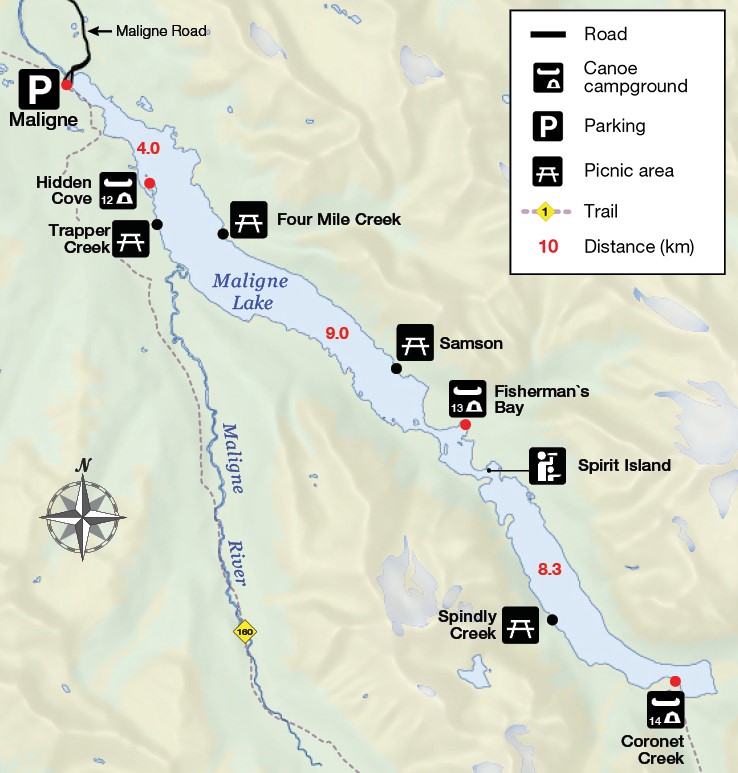
Booking
- Firewood is available at the Maligne Lake boat launch to bring on your trip. Wood supply at the campsites may be limited.
- The Maligne Lake campgrounds are very popular in the summer and should be booked well in advance.
- There is a 2-night maximum stay at each campground, maximum 6 nights total. You may not deviate from your registered itinerary.
- Maximum group size is 10 people, and 5 sites to minimize conflicts with other groups.
Safety and weather
- Early starts are recommended.
- The glacial-fed water remains very cold throughout the summer (approximately 4°C).
- Expect the possibility of high winds and sudden weather changes. Snow is possible during any month.
- Travelling in poor weather on the lake is not recommended.
- Always wear a life jacket. Be sure to give space to the tour boats operating on the lake.
Regulations
- Gas motors prohibited.
- Generators are prohibited.
- No noise from 11 p.m. to 7 a.m. Quiet time is all the time.
Fishing
- A National Park Fishing Permit is required. All fish waste should be burned hot in the fire rings. This good bear safe practice will eliminate grease, odours and food attractants.
Campground information
| Campground | Description | # of sites | Toilet type | Food storage | UTM |
|---|---|---|---|---|---|
| Hidden Cove #12 |
A small campground located in a sheltered cove on the west side of the lake, perfect for families and novice paddlers. Offers a shelter with a wood stove. | 4 | Barrel | Lockers | 11U 458574 5839444 |
| Fisherman’s Bay #13 |
Located in a small cove on the east side of the lake. It offers nice views and is a good base for fishing. | 8 | Barrel | Lockers | 11U 465958 5833854 |
| Coronet Creek #14 |
Located at the southern end of Maligne Lake. The site offers peace and quiet, wonderful views of the Coronet Glacier, nice day hiking and great fishing. | 8 | Barrel | Lockers | 11U 471337 5827442 |
* All campgrounds have docks.
How to get there
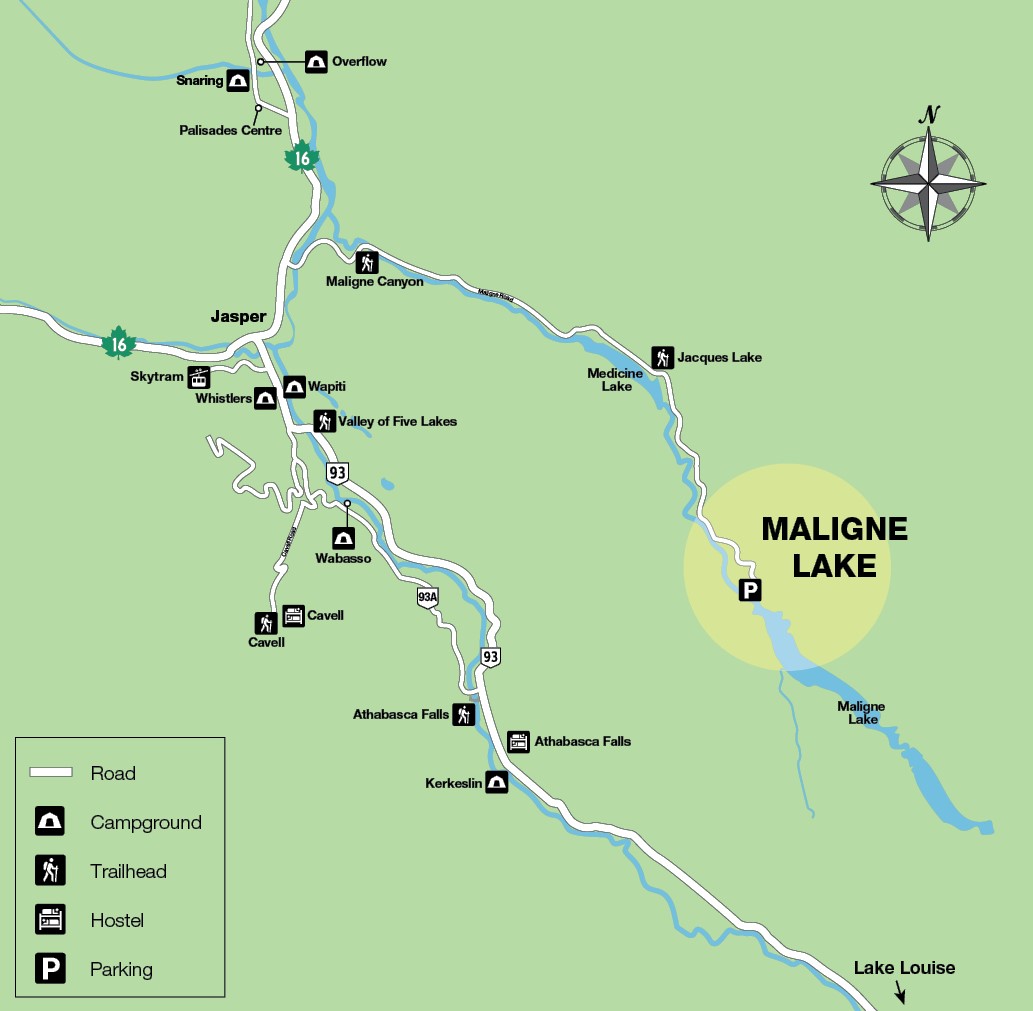
- Take Highway 16 East towards Edmonton for two kilometres.
- Turn right and cross the bridge to the Maligne Road (keep left after the bridge).
- Continue for 46 km south on the Maligne Road to Maligne Lake.
- Continue on the road past the first parking lot and across the bridge. You will find a boat launch in the parking lot on the west side of the lake.
Clean, drain and dry to prevent the spread of Aquatic Invasive Species
You can prevent the spread of Aquatic Invasive Species (AIS). Before you drive to Maligne Lake, clean, drain, and dry all watercraft and items you plan to put in the water here.
Make clean, drain, dry a habit everywhere you go!
For information: parks.canada.ca/jasper-aquatic-invasive-species
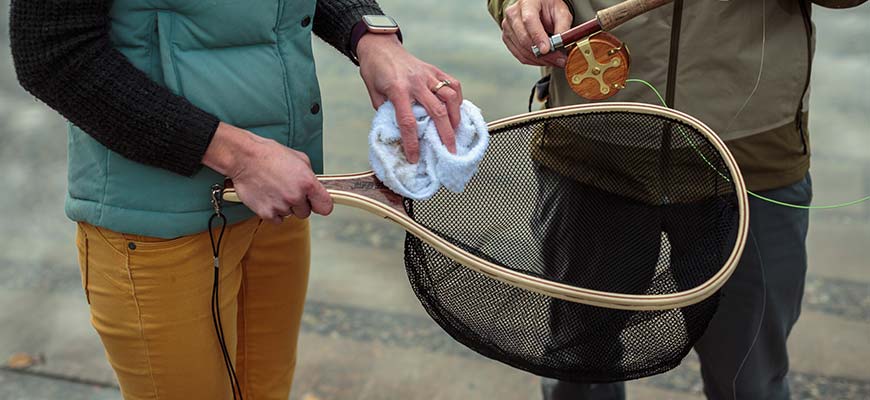
Clean
Clean all mud, sand, plant or animal parts from all items before leaving the shore.
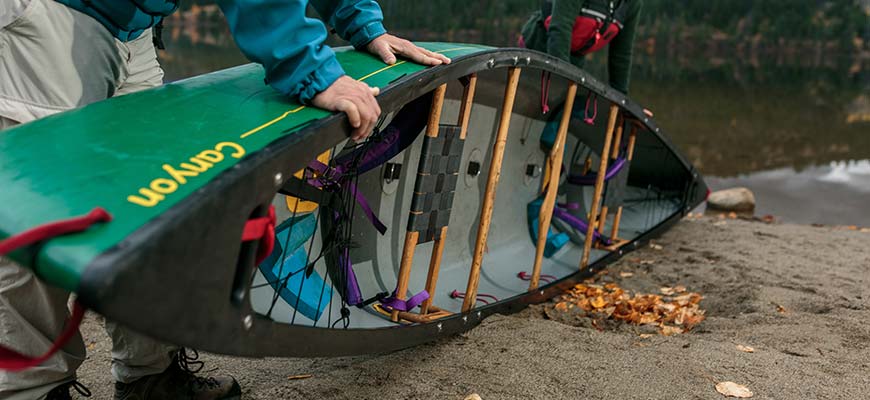
Drain
Drain, onto land, all items that can hold water.
- Invert or tilt items.
- Open all compartments.
- Remove seats if necessary.
- Pull the drain plug if applicable.
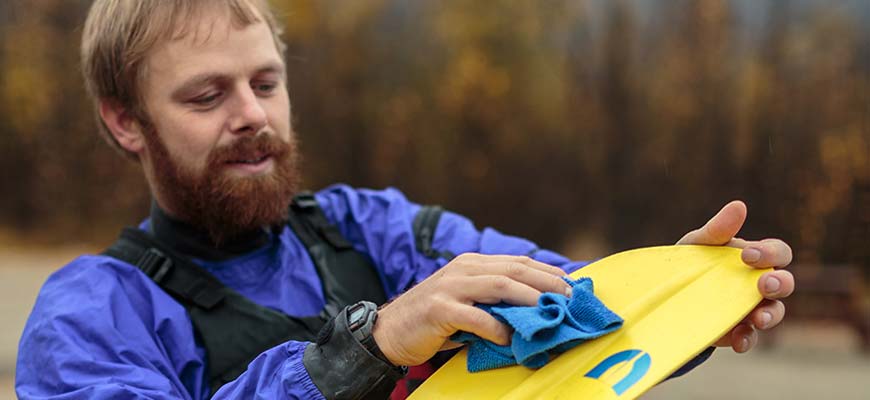
Dry
Dry all items completely before entering any river, pond, lake or stream.
Are you prepared?
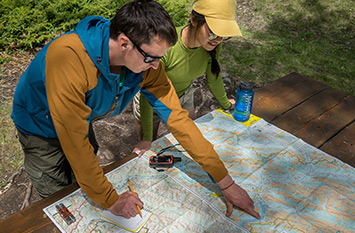
Safety is your responsibility
Refer to the Jasper National Park Backcountry Planning Guide:
- descriptions of trail types and campground facilities;
- equipment checklists;
- responsible camping practices;
- safety information.
Before heading out, check trail, weather and road conditions at: parks.canada.ca/jaspertrails.
Maps
| NTS | National Geographic | Gem Trek |
|---|---|---|
| Athabasca Falls 83C/12 Southesk Lake 83C/11 |
Jasper South | Jasper and Maligne Lake |
Permits
A backcountry camping permit is mandatory for all overnight trips and can be obtained online at reservation.pc.gc.ca or by calling 1-877-737-3783.
- Date modified :
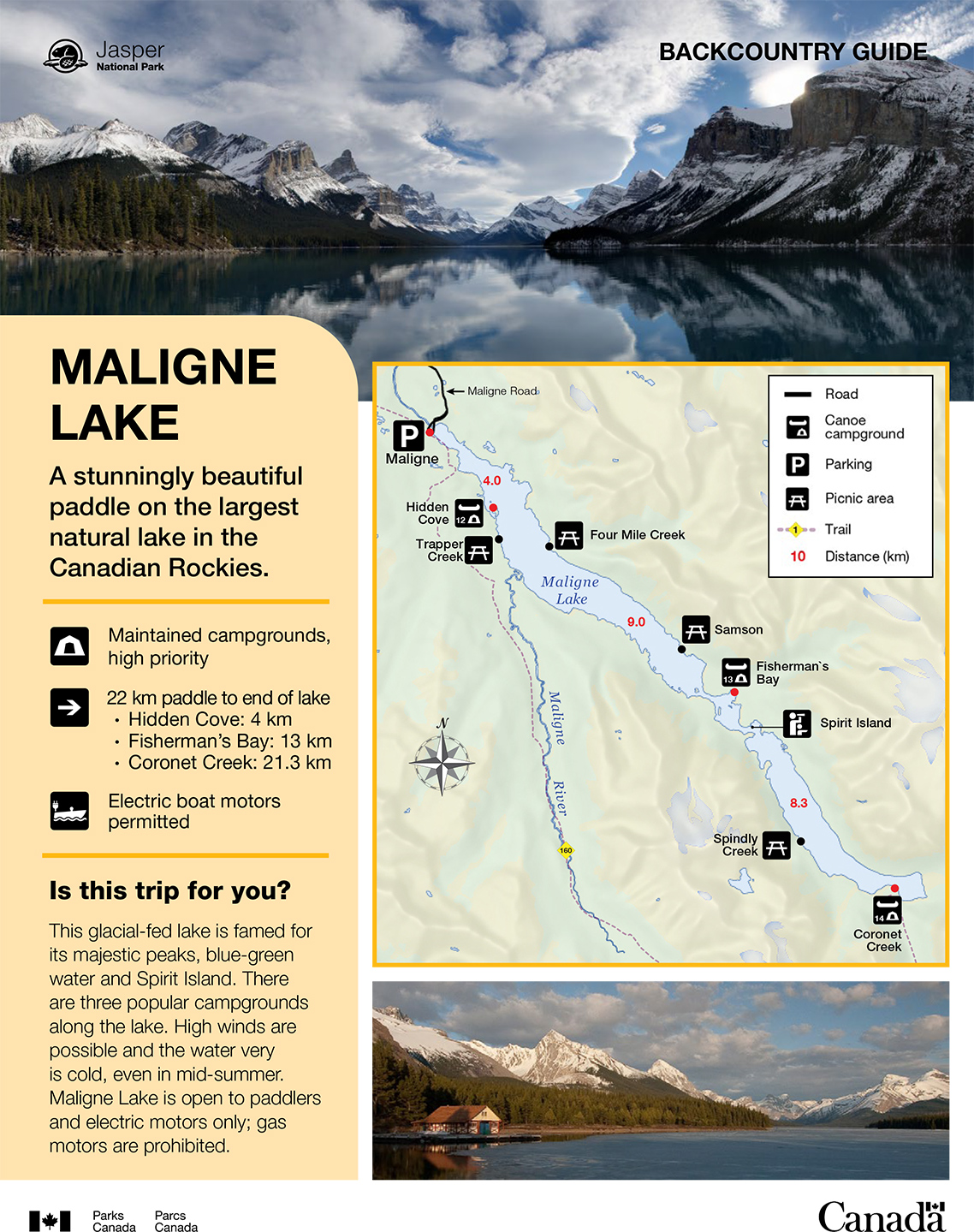 Maligne Lake Backcountry Guide (PDF, 1,35 KB)
Maligne Lake Backcountry Guide (PDF, 1,35 KB)